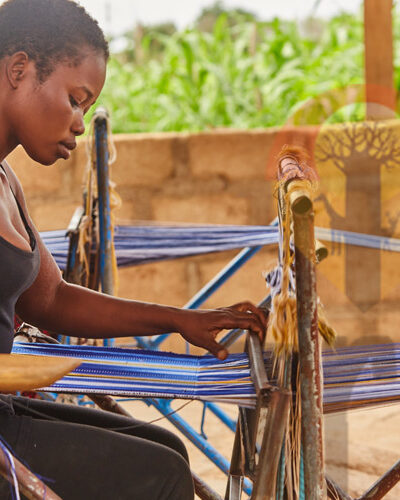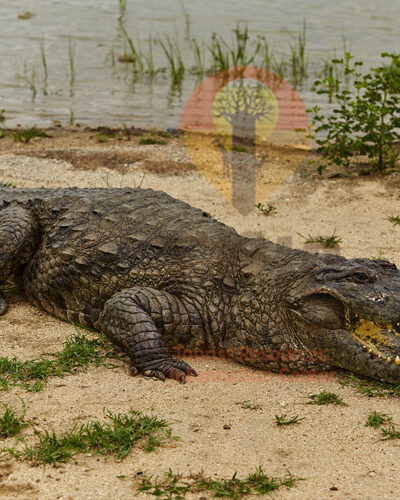Historically, Bolgatanga was situated at the southern terminus of the ancient Trans-Saharan trade route. The name Bolgatanga(Bolbatanga) was derived from the Guresi words bolba “migrants” and tanŋa “pyramid.” Bolga is home to several naturally beautiful looking rocks. The eastern route converged with the Sahelian route, near Bolgatanga. Along the route, handcrafts especially straw baskets, hats and fans, as well as leather goods, metal jewellery, and indigenous attires were exchanged for kola nuts and salt.
Bolgatanga, in Frafra pronounced Bɔlegataŋa, colloquially known as Bolga, is a town and the capital of the Bolgatanga Municipal District and the Upper East Region of Ghana, adjacent to the border with Burkina Faso. Upper East has a population of about 1,301,226 people. Bolgatanga is 161km(about 100 miles) to the north of Tamale. Bolgatanga lies in the Red Volta River Valley(which serves as a major migration route of elephants), with the White Volta River and the cliffs of the Gambaga escarpment to the south of the town forming the southern boundary of the Upper East Region
The Upper East Region, where Bolgatanga lies, is part of what used to be known as the Upper Region. Between 1902 and 1960 the Northern Territory was a British protectorate; it was separated into the Northern and Upper Region on July 1, 1960. The Upper Region was apportioned into Upper East and Upper West Regions in 1983. The inhabitants of Bolgatanga migrated from Yoa a community in the Kasena Nankana east municipal. Communities in Bolgatanga include; Atulbabiisi, Dagweom, Bukere, Soe, Yarigabiisi, Zuarungu Sumbrungu Tindaamoligo, Zaare,Yorogo.
Known as the crafts centre of Upper East Region, Bolga has a large central market. Apart from items found elsewhere in Upper East Region, the popular “Bolga hats” are made and sold in Bolgatanga. Bolga and its surrounding suburbs also comprise the largest producers of leather works, straw baskets and smocks. The artists sell their artifacts at the Bolga Market, which is open every third day. There is also a museum which houses objects of historical importance of the Upper East Region in Bolgatanga. By way of promoting the cultural heritage of Ghana and Africa, in 2003 the municipal assembly constructed the Bolgatanga Craft Village. The art center showcases and sells woven smocks, baskets, leather works(mostly bags, sandals), bags, local and foreign beads, figurine dolls, sculptures, ceramic(bowls), local drums, art work from Mali, Nigeria and many other artefacts.
By road there are Public Transport from Bolgatanga to major cities such as Kumasi, Accra, Tema, Wa, Tamale, Techiman, Sunyani, Cape Coast, Mim, Ahafo, Ho, Elubo, Aflao, etc.
By air it was settled after the technical committee that was charged with finding the right location for siting the airport proposed three sites, 2 in Bolgatanga and 1 in the Kasena-Nankana area but recommended Bolgatanga for the airport. It was however clarified that the announcement by government in the 2021 budget to construct an aerodrome in the Navrongo-Paga area, indicating that the Paga airstrip will be redeveloped into an aerodrome for usage by the Ghana Armed Forces while a new airport will be constructed in the regional capital for civilian air flights. Until then Bolgatanga does not have an aerodrome.
The occupation, of the people of Bolga is predominantly farmers. They engage in subsistence farming of guinea-corn, millet, rice, cowpea, maize, groundnuts and sweet potatoes during the raining season and irrigation farming of tomatoes, onions, and pepper during the dry season. almost every farmer rears at least a bird or an animal.
The staple food of the people of Bolga is Tuo Zaafi(TZ) made with millet, corn or guinea millet flour with mostly leafy soup(beto).
Upper East’s climate is hot/semi-arid most days of the year with Navrongo considered the hottest place in Ghana.
Paga is located about 40km(about 25 miles) from Bolgatanga, and is home to the sacred crocodile ponds. These are purportedly the “friendliest” crocodiles in Ghana, and it is said that the souls of the royal family reside in them. The crocodiles roam freely throughout the ponds and it is unthinkable that anyone should harm them.
Bolgatanga is a place to visit and like most places, there are several unlisted and (or) unpublished landmarks and tourist attractions hidden in plain sight. It is an inevitable fact that these heritage sites and destinations are economically viable. The Tourist Resources Information Centre-TRIC seeks to unravel and to maximize the vast touristic socioeconomic potentials of Bolgatanga and the Upper East region at large.
Join us, stay with us and watch this space as we are on a nominal trajectory to maximize the under marketed touristic potentials of our land including neghbouring towns as Tongo, Bawku, Paga Sandema, etc.





